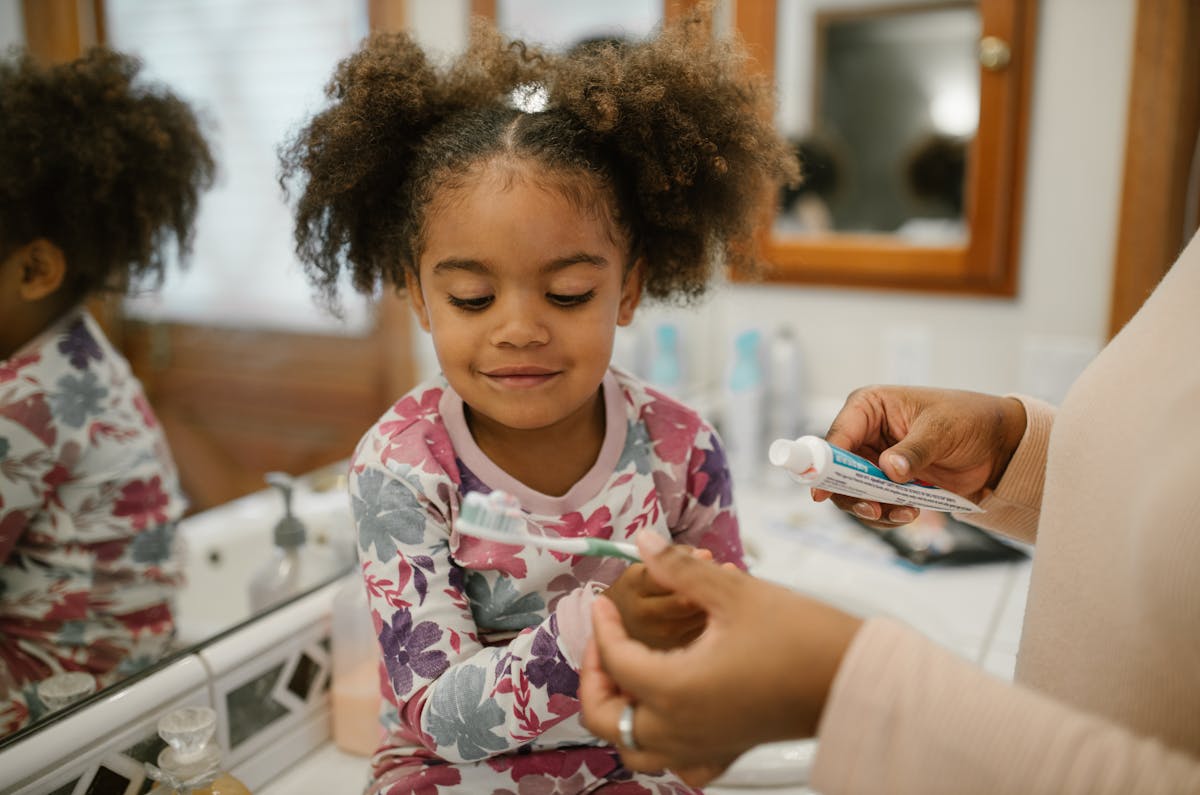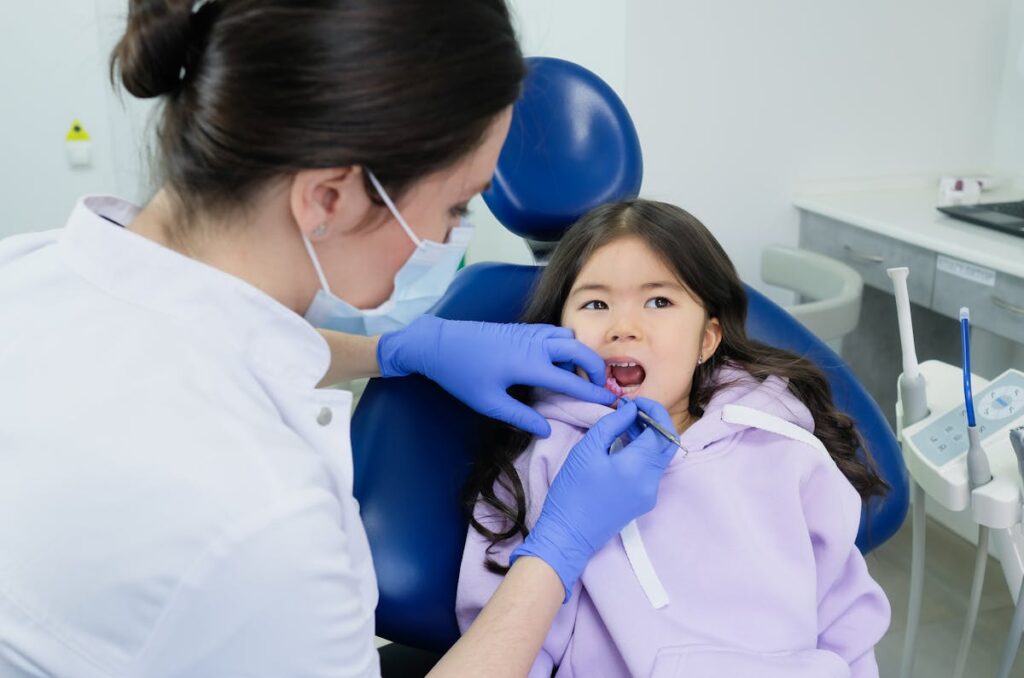As a parent, you’re probably curious about your child’s oral health milestones and how to navigate them effectively. Your pediatric dentist in Live Oak is here to guide you through this journey, from the first tooth eruption to establishing lifelong healthy habits. By understanding key stages and common issues, you can safeguard your child maintains a bright smile and avoids potential complications. Ready to explore pivotal insights for your child’s dental wellness?
The Teething Timeline: What to Expect and When
When it comes to your child’s development, understanding the teething timeline can help you anticipate and manage this important phase. Typically, teething begins around six months, although it can start as early as three months or as late as twelve. The lower central incisors usually appear first, followed by the upper central incisors. By the time your child is three, they should have a full set of 20 primary teeth. During teething, you might notice increased drooling, irritability, and a desire to chew on things. To ease discomfort, offer a chilled teething ring or gently massage their gums with a clean finger. Remember, every child is different, so variations in timing are normal. Keep an eye out for any unusual symptoms.
First Dental Visit: Setting the Foundation for Oral Health
Although it might seem early, scheduling your child’s first dental visit by their first birthday is essential for establishing a foundation for lifelong oral health. At this initial appointment, your pediatric dentist in Live Oak will check for any early signs of dental issues and guarantee your child’s teeth and gums are developing properly. This visit sets the stage for a positive relationship with dental care, helping your child feel comfortable in the dentist’s chair. You’ll also receive valuable guidance on brushing techniques, fluoride use, and healthy eating habits to protect those tiny teeth. By addressing potential concerns early and promoting good oral hygiene, you’re giving your child the best start for a healthy smile that lasts a lifetime.
Maintaining Those Primary Teeth: Importance and Care
After setting the foundation with that all-important first dental visit, it’s time to focus on maintaining those primary teeth. They’re not just placeholders; they’re essential for your child’s speech development, chewing abilities, and even guiding permanent teeth into the correct position. Start by establishing a consistent oral hygiene routine. Brush your child’s teeth twice a day using a soft-bristled toothbrush and fluoride toothpaste. Remember, flossing is indispensable once teeth touch. Limit sugary snacks and drinks to prevent cavities. Regular dental check-ups are necessary—your local pediatric dentist for your child can spot potential issues early and provide professional cleanings. Encourage your child to drink plenty of water, especially fluoridated water, to strengthen enamel. Instilling these habits now sets the stage for lifelong oral health.
Transitioning to Permanent Teeth: Key Changes to Monitor
As your child moves from primary to permanent teeth, you’ll want to watch for signs of tooth eruption, like new teeth appearing behind or in place of baby teeth. It’s also important to keep an eye on how these new teeth align, as early detection of misalignment can lead to timely orthodontic intervention. Maintaining vigilance during this period safeguards your child’s oral health.
Signs of Tooth Eruption
When a child’s first set of teeth begins to give way to their permanent counterparts, it marks a significant milestone in their development. You might notice several signs indicating this shift. One of the first things you’ll see is the appearance of wiggly baby teeth, often the front ones, making room for the larger, sturdier permanent teeth. This process typically starts around age six.
Watch for swelling or tenderness in the gums, which can be a sign that a permanent tooth is pushing through. Your child might also experience some discomfort or sensitivity in their gums. Loose baby teeth can fall out naturally, so reassure them it’s a normal process. Keep an eye on their oral hygiene to guarantee a smooth changeover.
Monitoring Dental Alignment
Monitoring dental alignment during the shift to permanent teeth is essential for ensuring your child’s oral health. As these teeth emerge, watch for signs of crowding or misalignment. If teeth seem crooked or there’s not enough space, it might be time to consult your pediatric dentist in Live Oak. They can assess whether intervention, like braces, is needed to guide proper alignment. Don’t ignore gaps or overlapping teeth, as these can affect bite and lead to long-term issues. Regular check-ups will help you catch any problems early. Also, pay attention to your child’s jaw development. If they experience discomfort or clicking sounds, it could indicate alignment issues. By staying vigilant, you can help maintain their healthy, confident smile.

Common Dental Issues in Children and How to Address Them
As a parent, you might notice a few common dental issues like tooth decay, early tooth loss, and misaligned teeth in your child’s oral health journey. To prevent tooth decay, it’s important to encourage good brushing habits and limit sugary snacks. If early tooth loss or misalignment occurs, consulting with a pediatric dentist can help you find the best solutions for your child’s needs.
Tooth Decay Prevention Tips
Tooth decay is one of the most common dental issues faced by children, but there are effective strategies to help prevent it. First, establish a routine of brushing their teeth twice daily with fluoride toothpaste. Make sure they’re using the right amount—just a smear for kids under three and a pea-sized amount for older children. Encourage flossing once a day to remove food particles and plaque between teeth. Limit sugary snacks and drinks, as they contribute to decay; instead, offer healthier alternatives like fruits and vegetables. Regular dental check-ups are indispensable, so schedule visits every six months. Ultimately, consider dental sealants, which provide an extra layer of protection by covering the grooves in teeth. These steps can foster a lifetime of healthy smiles.
Addressing Early Tooth Loss
Early tooth loss in children can be concerning, but understanding the causes and solutions helps manage this common issue. Often, early tooth loss results from tooth decay, injury, or inadequate oral hygiene. It’s paramount to address these problems promptly to prevent complications like shifting teeth or poor speech development.
If your child loses a tooth prematurely, schedule a visit with your pediatric dentist in Live Oak. They can evaluate the situation and suggest appropriate interventions, such as space maintainers, to keep adjacent teeth in place until the adult tooth emerges. Encourage proper brushing and flossing habits and safeguard regular dental check-ups to prevent further issues.
Managing Teeth Misalignment
Many children experience teeth misalignment, a common dental issue that can affect both function and aesthetics. You might notice your child’s teeth aren’t lining up quite right as they grow. This can lead to challenges with chewing, speaking, and even self-esteem. It’s important to address misalignment early on. Consult your pediatric dentist in Live Oak about potential treatments like braces or clear aligners, which can guide teeth into their correct positions. Your dentist might also suggest exercises or devices to help improve alignment. Regular check-ups are pivotal, as they’ll allow the dentist to monitor your child’s development and make timely adjustments. Remember, early intervention can prevent more significant issues down the road, ensuring your child’s smile stays healthy and confident.
Establishing Healthy Oral Habits for a Lifetime
While it’s easy to overlook, establishing healthy oral habits early on can markedly impact your quality of life. By teaching your child good practices, like brushing twice daily and flossing, you’re setting them up for a lifetime of healthy teeth and gums. It’s not just about preventing cavities; it’s about fostering confidence with a bright smile.
Start by making oral hygiene fun. Choose a toothbrush with their favorite character and a flavored toothpaste they like. Set a timer or play a song while they brush to confirm they’re brushing long enough. Regular dental check-ups are essential, too. A pediatric dentist in Live Oak can provide personalized advice and reinforce the importance of these habits, making dental visits a positive experience.
Conclusion
By staying proactive with your child’s oral health, you’re setting the stage for a lifetime of healthy smiles. Regular check-ups with your pediatric dentist in Live Oak and establishing good brushing and flossing habits early on are essential. Keep an eye on their dental milestones, address issues like tooth decay promptly, and guarantee dental visits are positive experiences. With your guidance and the support of your dentist, your child will enjoy lifelong oral wellness.

